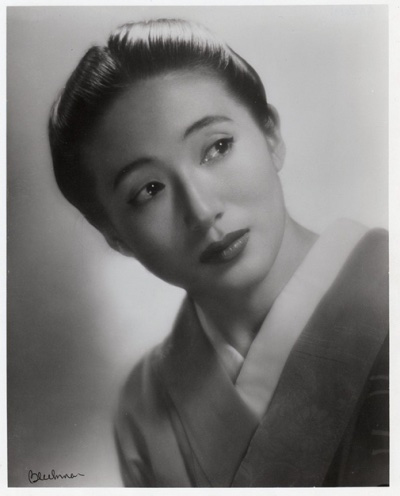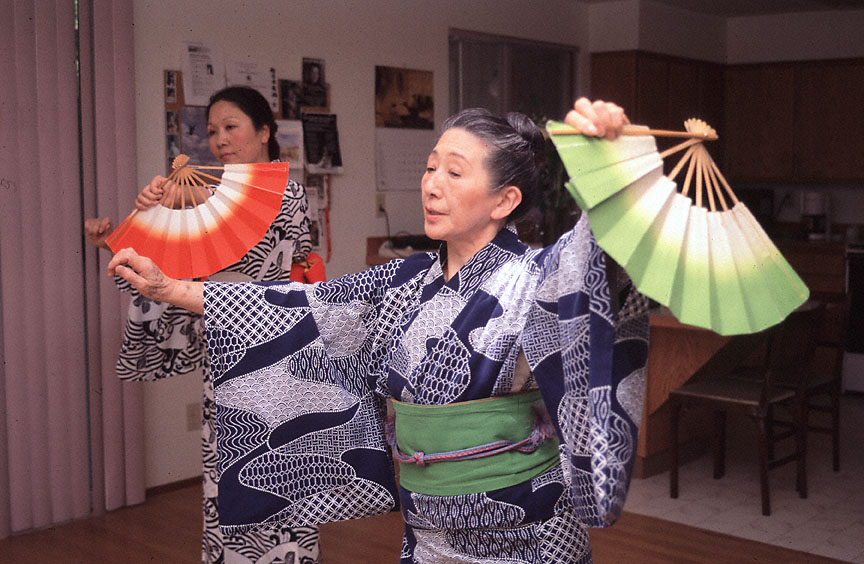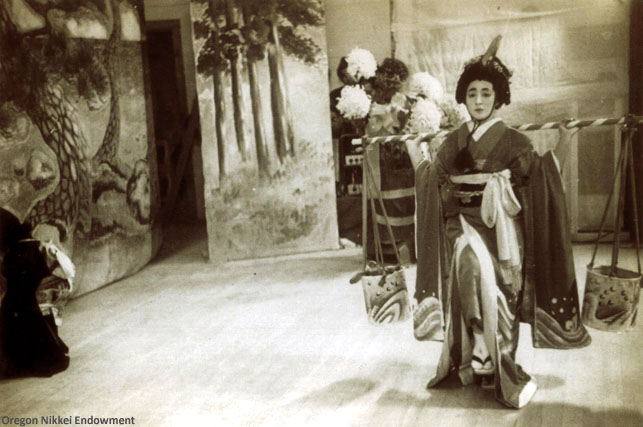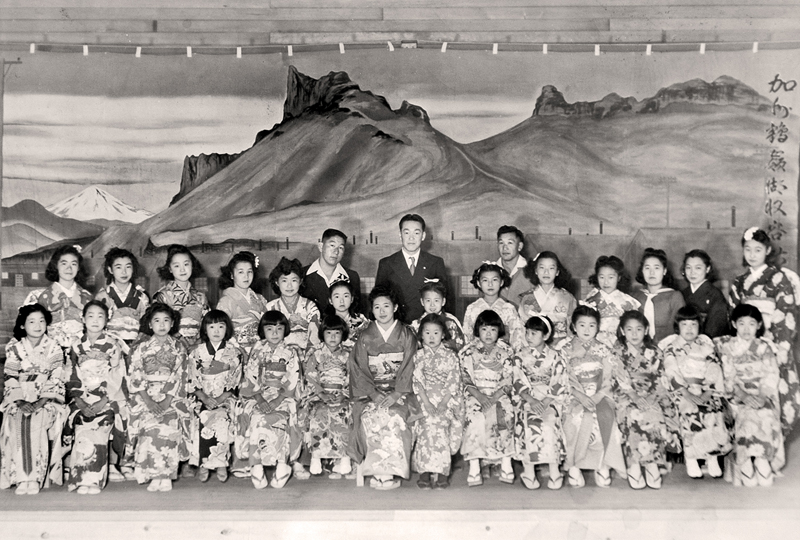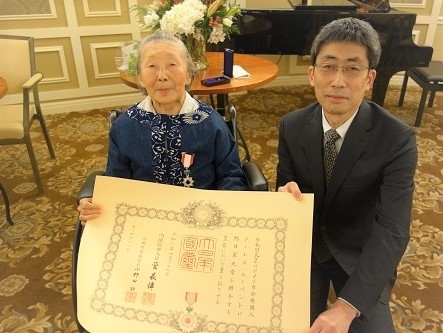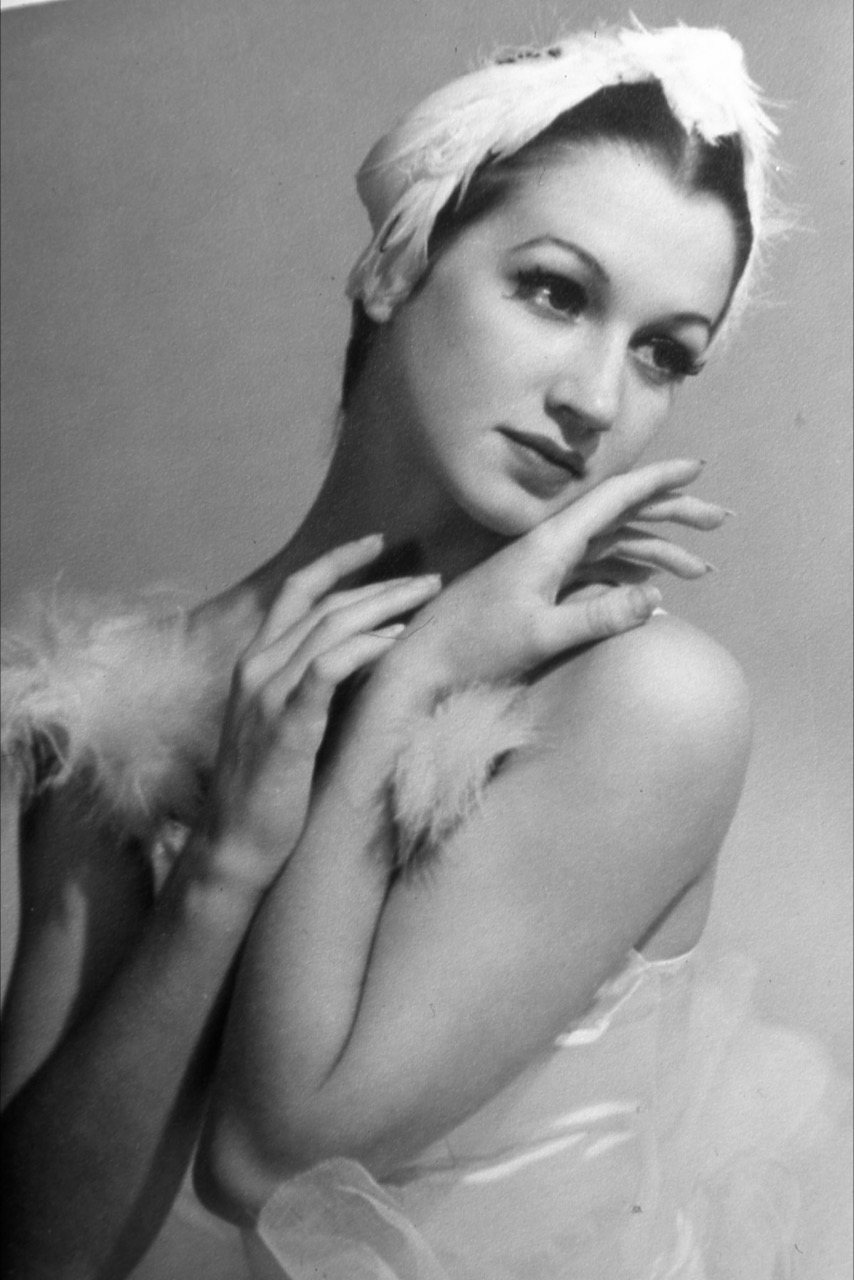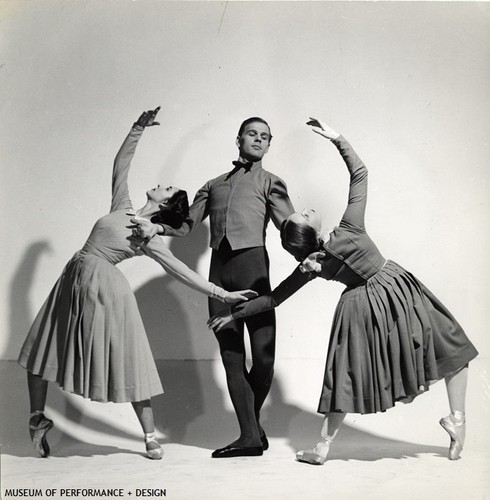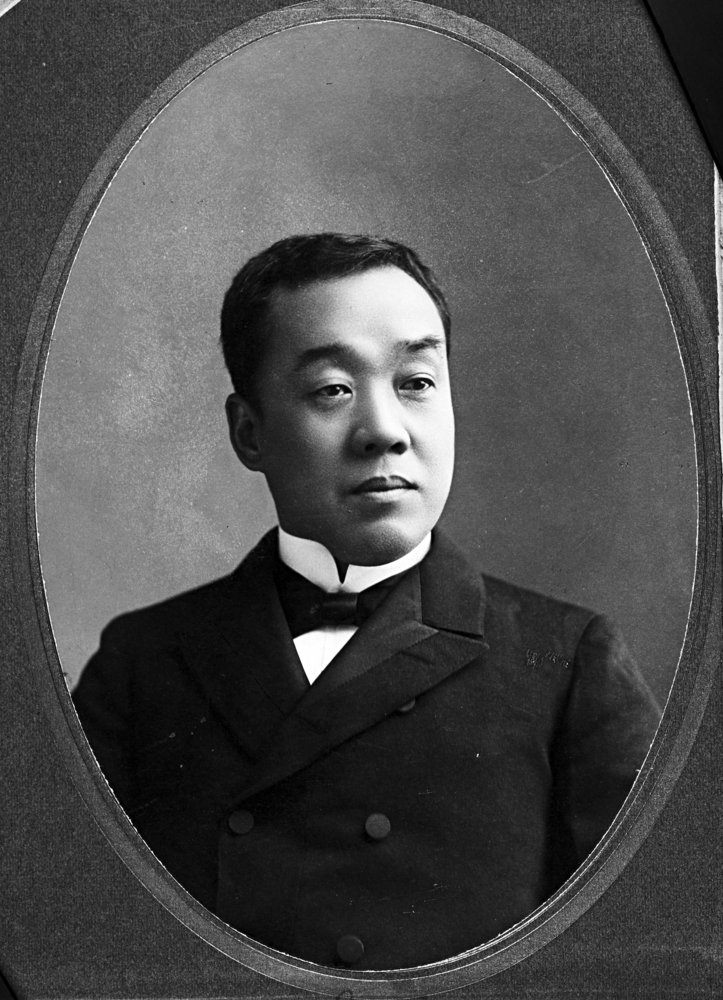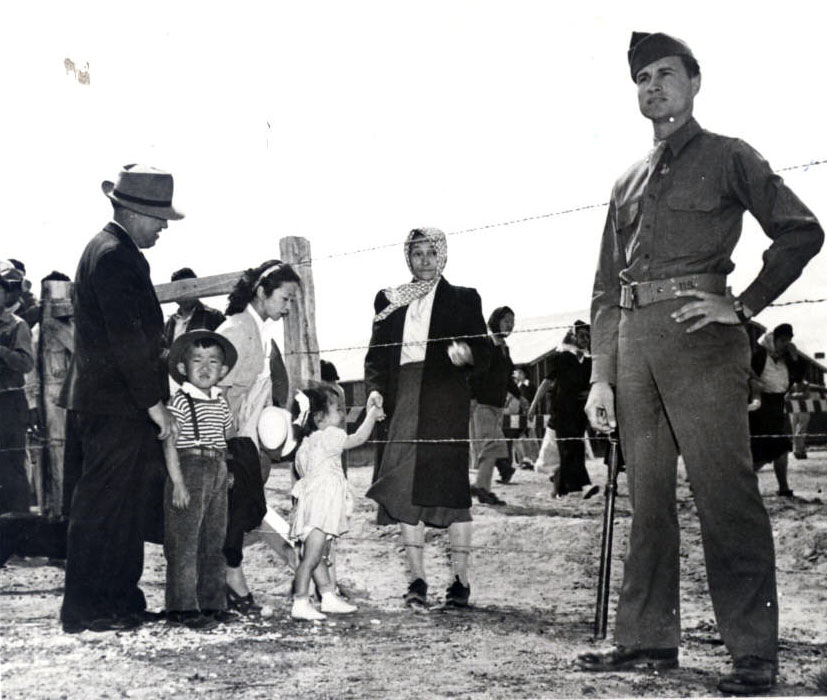Sahomi Tachibana was a Japanese American master teacher and performer of Nihonbuyo (traditional Japanese dance) and the regional folk dances of Japan. When she arrived in Portland in 1990, she had already been teaching Nihonbuyo for almost twenty-five years in her own studio, and she brought her expertise to new students in Oregon. She worked with taiko groups and professional arts organizations as a consultant and performer, and her work can be seen in the 2016 Laika Studio film Kubo and the Two Strings. “It is a lifelong study, and I am trying to teach my students whatever I have so it will enrich their lives,” she said. “Dance has been my life.”
Tachibana was born Doris Haruno Abe to a farming family in Mountain View, California, on April 6, 1924. Her father Wakichi Abe immigrated from Fukushima, Japan, in 1915; her mother Rin Abe immigrated in 1917. Doris Abe began dancing when she was seven years old. As a child, she performed between scenes at her grandparents' amateur kabuki theater in Mountain View. At the suggestion of a friend in the United States, her father's branch of the family changed their name to Abey so people wouldn’t mispronounce it.
When she was eleven, Abey studied first with Saho Tachibana at the Tachibana School of Dance in Fukushima and then under Hiroyo Tachibana at the Tachibana School of Dance in Tokyo. The rigorous system of Nihonbuyo maintains a master lineage that protects the legacy of Japanese traditional arts. Only after being accepted to train as a Natori (a teacher) is a new name given to a person, who is then allowed to continue the legacy. In 1941, Abey earned her dance name, Sahomi Tachibana, which means “a beautiful bird of paradise.”
At her grandfather’s urging, Tachibana returned to California in November 1941, sailing on the last ship to leave Japan before the attack on Pearl Harbor. She and her family were kept at the temporary Arboga Assembly Center in California then at Tule Lake, California, and finally to the Central Utah Relocation Center, an incarceration camp later named Topaz. “We had to provide our own entertainment in camp,” she told Oregon Public Broadcasting. “There was nothing else.” So she taught dancing. “There was no teacher at camp, so I went from being the student to being the teacher,” she told Discover Nikkei in 2018.
After the war ended, Tachibana moved to New York City, where she studied modern dance and ballet. Following a successful New York debut in June 1948, her dance career blossomed, and she soon found international acclaim as a master of classical Japanese dance. Tachibana also studied dances from throughout the country, folk dances that each region is known for. She performed at the Folkloric Dance Troupe of Japan and the International Artist’s Center in Tokyo and made her New York debut at La Meri’s Ethnological Dance Center on June 24, 1948. Sahomi Tachibana married Frank Hrubant in 1949.
During her career, Tachibana was an assistant director with the Metropolitan Opera and performed on Broadway in A Majority of One and Rashomon. She also restaged Yoshio Aoyama’s production of Madame Butterfly in Chicago. She performed at Jacob’s Pillow in Becket, Massachusetts; the Brooklyn Academy of Music; Radio City Music Hall in New York City; Lyric Opera of Chicago; and the Smithsonian Institution.
In 1966, Tachibana formed a dance company in New York City with Sahotae Tachibana and Sahotoyo Tachibana, who taught and studied with Sahomi for a number of years; received their Japanese dance names in Tokyo in 1975. Sahomi Tachibana and her husband left New York in 1990 and moved to Portland to be near their daughter. Tachibana established a studio in the city—often teaching at the Oregon Buddhist Temple—where her repertoire included classical kabuki dramas and folk and semi-classical dances, many of which are National Treasures of Japan. Her Tachibana School in New York City is still operating.
The Portland animation studio, Laika, relied on Tachibana's expertise for its movie Kubo and the Two Strings, released in 2016. The film takes place in ancient Japan and tells the story of a boy with a mythical power who is pursued by his mother's magical family. Tachibana choreographed the traditional dance scenes in the Obon Festival held in Kubo's village—the animators translated her dance movements through stop-motion, step by step.
In April 2021, the Japanese government awarded Sahomi Tachibana the Order of the Rising Sun–Silver Rays for her contributions to the “promotion of Japanese arts and friendly relations between the two countries.” She retired in 2014 at the age of ninety. Some of her students continue to share Nihonbuyo and traditional folk dances with new audiences. Many of Tachibana’s costumes and props are now in the collections at the Topaz Museum in Delta, Utah. She died on October 10, 2024.
-
![]()
Sahomi Tachibana.
Courtesy Rafu Shimpo -
![]()
Sahomi Tachibana teaches Chisao Hata (left) traditional Japanese dance, 1998.
Oregon Historical Soc. Research Lib., Folklife S 2- 2622
-
![Sahomi Tachibana performs on stage at the Topaz (Utah) camp in 1944.]()
-
![]()
Sahomi Tachibana (front, center) with her students at Tule Lake incarceration camp.
Sahomi Tachibana -
![]()
Sahomi Tachibana receiving the decoration of the Order of the Rising Sun, Silver Rays, 2021.
Courtesy Consular Office of Japan in Portland
Related Entries
-
![Jacqueline Schumacher (1920-2019)]()
Jacqueline Schumacher (1920-2019)
Jacqueline Martin Schumacher, a ballerina and choreographer of ballet a…
-
![Janet Reed (1916-2000)]()
Janet Reed (1916-2000)
Janet Reed’s stellar career began in Portland in 1934 when she danced t…
-
![Japanese Americans in Oregon]()
Japanese Americans in Oregon
Immigrants from the West Resting in the shade of the Gresham Pioneer C…
-
![Japanese American Wartime Incarceration in Oregon]()
Japanese American Wartime Incarceration in Oregon
Masuo Yasui, together with many members of Hood River’s Japanese commun…
Related Historical Records
Map This on the Oregon History WayFinder
The Oregon History Wayfinder is an interactive map that identifies significant places, people, and events in Oregon history.
Further Reading
Kashiwagi, Soji. "Sahomi Tachibana: American legacy of a Japanese dancer." Nichi Bei, April 2, 2022.
Culross, Mikey Hirano. “For More Than 80 Years, Grace in Every Step.” Discover Nikkei, February 21, 2018.
Hidden Legacy: Japanese Traditional Performing Arts in the WWII Internment Camp. Murasaki Productions. US Department Interior, National Park Service. Japanese American Confinement Sites Grant Program. Video.
Inourn, Yoshinobu, and Toshio Kawatake.The Traditional Theater of Japan. Toronto, ON: Weatherhill, 1971.
Letter, Samuel L. A Kabuki Reader/History and Performance. Armont, NY: M. E. Sharpe, 2002.
Van Zile, Judy. The Japanese Bon Dance in Hawaii. Hawaii: Press Pacifica, 1982.
Traditional Japanese Dancer Sahomi Tachibana. Oregon Public Broadcasting.

